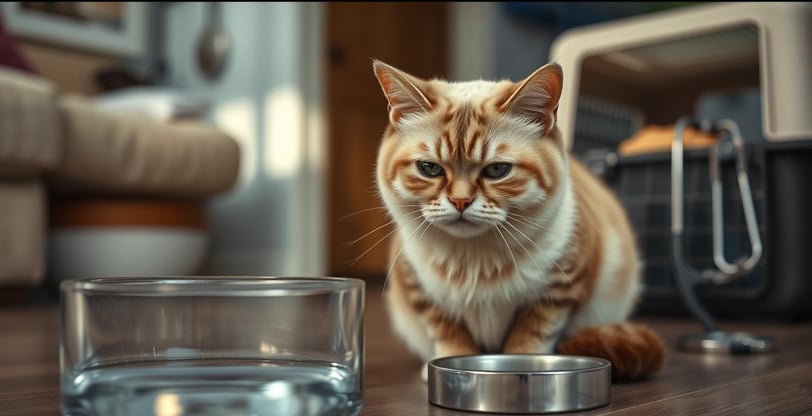

The bond with our cats is special and can't be replaced. When they face health issues, it breaks our hearts. Kidney disease is treatable but can sneak up on your cat. By watching for early signs, you can help your cat feel better.
Understanding Cat Kidney Disease: An Overview
As pet owners, it's key to know about cat kidney disease. It's a big health issue for our feline friends. Kidneys are crucial for a cat's health. Learning about them helps us spot and tackle problems early.
How Cat Kidneys Function
Cat kidneys filter waste and extra fluids from the blood. They keep the balance of important minerals and electrolytes. They also help control blood pressure and make red blood cells.
Types of Kidney Disease in Felines
Acute kidney injury: A sudden and severe decline in kidney function, often caused by dehydration, toxin exposure, or infections.
Chronic kidney disease: A progressive and irreversible deterioration of kidney function, typically associated with aging or underlying medical conditions.
Polycystic kidney disease: A hereditary condition characterized by the formation of fluid-filled cysts within the kidneys.
Early Warning Signs of Kidney Disease in Cats
It's important to spot the early signs of kidney disease in cats to act fast. The symptoms of kidney failure in cats can be hard to notice at first. So, pet owners need to watch for any changes in their cat's behavior.
One sign is if your cat drinks a lot more water. Cats with kidney disease often get thirsty and drink more. They might also go to the litter box more often because their kidneys can't handle the extra fluid.
Increased water intake
Frequent urination
Changes in litter box behavior
Another sign is if your cat loses weight, even if they're eating more. This happens because their kidneys can't filter and use nutrients right. This leads to muscle loss and a decrease in body condition.
"Being alert and catching kidney disease early is crucial. The sooner it's found, the better the treatment and life quality for your cat."
- Dr. Emily Whitaker, Veterinary Nephrologist
Also, changes in your cat's coat and grooming habits can be a sign of kidney disease. If your cat looks dull or sheds more, it might be struggling to groom itself. This could be due to illness or discomfort.
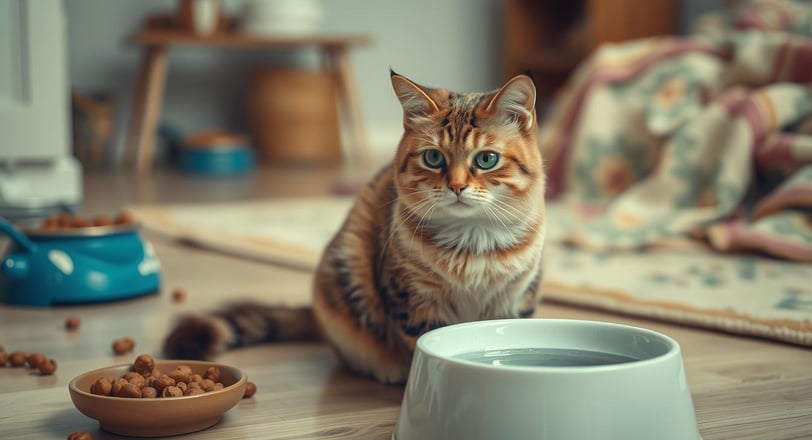

By paying attention to these early signs and getting vet help quickly, you can catch kidney disease in cats early. This can lead to better treatment and a good outcome for your cat.
Changes in Urination Patterns and Thirst
One of the first signs of kidney disease in cats is a change in how they urinate and drink. Cats may show certain behaviors when their kidneys start to fail. These signs can help owners notice a problem early.
Increased Water Consumption
Cats with kidney disease often drink more water. They may urinate more and in bigger amounts. This means they need to drink more to stay hydrated. Watching how often you need to refill their water bowl can be a clue.
Litter Box Behavior Changes
Cat behavior in the litter box can also hint at kidney issues. Cats with kidney disease might pee outside the box or spend a lot of time in it. Watching for these changes can help you understand their kidney health.
Urination Volume Differences
Cats with kidney disease may also pee more at once. Their kidneys can't concentrate urine well, causing them to lose more water. Looking at the litter box for these signs can help spot kidney disease early.
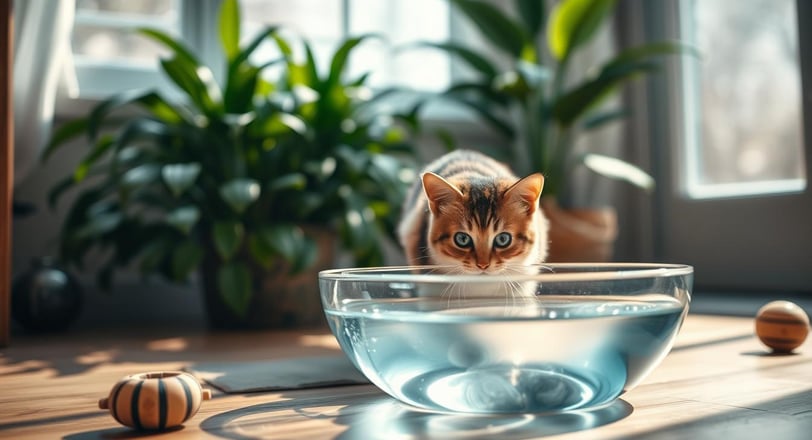

By watching your cat's drinking and peeing habits, you can catch kidney disease early. Being alert to these changes can help manage and treat this common health issue in cats.
Behavioral Changes That Signal Potential Problems
Cat owners know their pets can show a lot, even if it's not always obvious. Signs of kidney disease in cats can start with changes in behavior. By noticing these changes, you can help your cat stay healthy.
A cat with kidney disease might seem less active. They might not want to play or run around like they used to. This could mean they're not feeling well and need to see a vet.
Decreased activity levels
Reduced socialization and interaction with family members
Changes in grooming habits, such as a dull or unkempt coat
Increased irritability or aggression
Altered sleeping patterns, such as increased or decreased sleep
These changes can also mean other health problems. Always talk to your vet if your cat's behavior changes a lot. Catching kidney disease in cats early can really help their life quality.
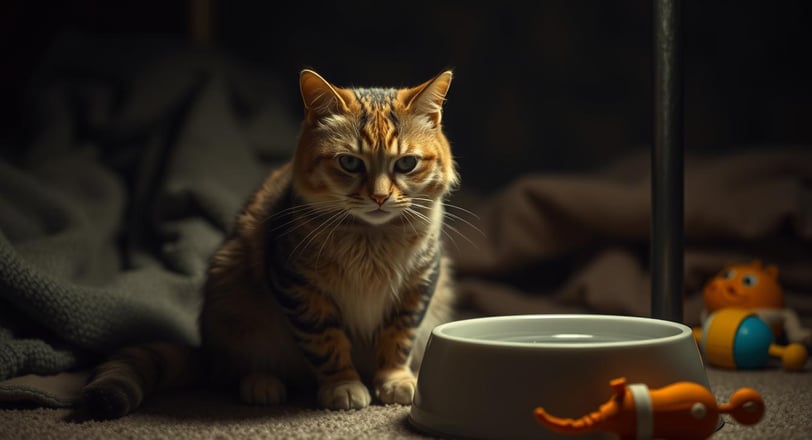

Watching your cat's behavior closely can help keep them healthy. Early action is key in dealing with signs of kidney disease in cats.
Physical Symptoms to Watch For
As cat kidney disease gets worse, pet owners might see physical changes in their cats. Watching for these signs can help catch the disease early. This can lead to quicker vet visits.
Weight Loss and Appetite Changes
One key sign of symptoms of kidney failure in cats is unexpected weight loss. Cats with failing kidneys may eat less and lose weight. This happens even if their diet and exercise stay the same.
Coat Condition and Grooming Habits
A cat's coat can tell a lot about its health. Cats with kidney disease often look dull and unkempt. Their coat might become dry, coarse, or patchy because they can't groom well.
Visible Physical Changes
Increased water consumption and urination
Bad breath or halitosis, often described as a "urine" or "ammonia" odor
Pale gums or other signs of anemia
Lethargy and decreased activity levels
By spotting these physical signs, cat owners can act fast to help their pets. Early action and vet care are key to managing cat kidney disease. This can greatly improve a cat's life.
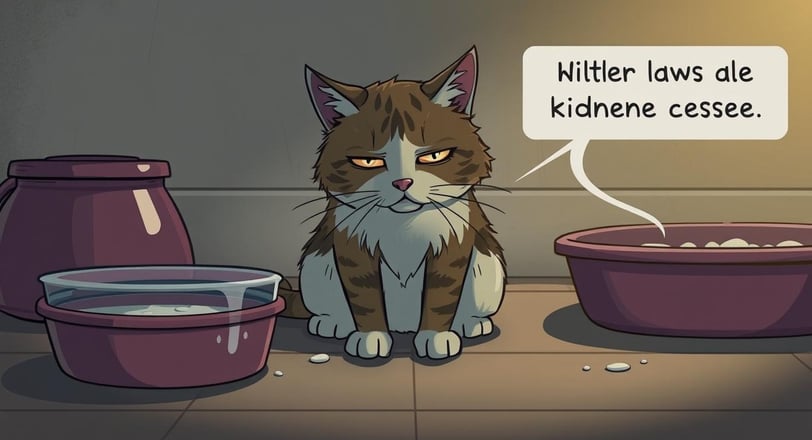

When to Seek Veterinary Care
It's vital to spot the early signs of kidney disease in cats. Quick action can greatly improve treatment success. Knowing when to take your cat to the vet is key.
Look out for these symptoms of kidney disease in cats to schedule a vet visit:
Increased water consumption and frequent urination
Changes in litter box habits, such as urinating outside the box
Decrease in appetite or weight loss
Lethargy or lack of energy
Poor coat condition or changes in grooming behavior
Don't wait to see a vet. Early treatment is crucial for effectively treating kidney disease in cats. The sooner it's caught, the better your cat's life will be.
"Catching kidney disease early can make a significant difference in the outcome for cats. Don't wait until the symptoms become severe before seeking medical attention."
If you see these signs, book a vet appointment right away. They'll check your cat, run tests, and create a treatment plan.
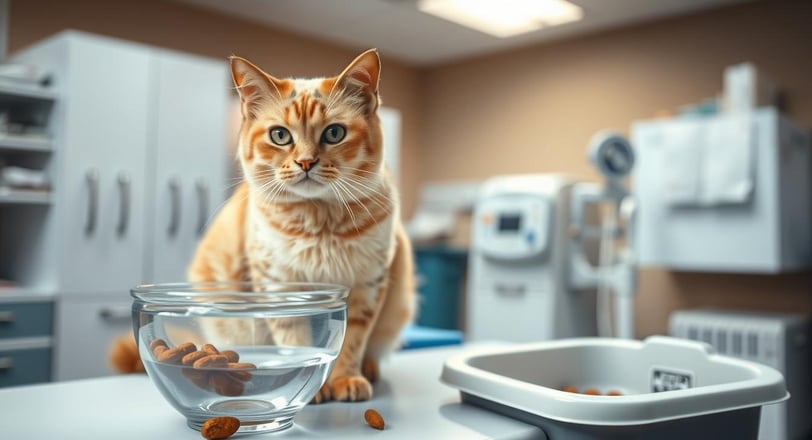

Diagnostic Tests for Kidney Disease in Cats
Diagnosing and managing kidney disease in cats is key. Tests help veterinarians understand your cat's kidney health. This knowledge guides them in creating a treatment plan. Let's look at the tests used to check for kidney disease in cats.
Blood Work and Analysis
A blood panel is a main tool for kidney disease diagnosis. It checks levels of creatinine and BUN in the blood. These markers show how well the kidneys filter waste.
Your vet can see how your cat's kidneys are working. They can also understand the severity of any kidney issues.
Urine Testing Methods
Urine tests are also important for kidney health checks. They look at urine concentration and for proteins or other issues. These tests show how well the kidneys filter and concentrate waste.
Imaging Options
Imaging like x-rays or ultrasounds can also help. They check the kidneys' structure and size. These tests can spot changes or problems that might cause kidney disease.
Your vet might suggest these tests to fully understand your cat's kidney health. This way, they can create a treatment plan that suits your cat's needs.
Risk Factors and Prevention Strategies
Keeping your cat's kidneys healthy is key, as cat kidney disease can be serious. Knowing the risks and using prevention strategies can protect your cat's health.
Age is a big risk factor for cat kidney disease. Older cats may have less efficient kidneys. Regular vet visits can catch early signs and help.
Diet is also important for how to treat kidney disease in cats. A high-quality, low-protein diet helps kidneys work better. Your vet can suggest the best diet for your cat.
Keeping your cat at a healthy weight and ensuring they drink plenty of water is vital. Dehydration and obesity can lead to cat kidney disease. Encourage your cat to drink more and watch their weight.
By being proactive, you can keep your cat's kidneys healthy. Regular vet visits, a balanced diet, and staying hydrated are key. These steps are part of a strong cat kidney disease prevention plan.
Treatment Options and Management
Dealing with kidney disease in cats can be tough. But, there are many ways to help your cat feel better. Knowing how to treat kidney disease in cats is key for caring for your pet.
Diet changes are a big part of treatment. Vets suggest special cat food that's low in protein, phosphorus, and sodium. This helps cats with kidney problems. Adding fluids, vitamins, and minerals to their diet can also help.
Medication: Vets might give meds to help with symptoms. This includes:
Phosphate binders to lower phosphorus levels
Diuretics to help with urine production
Appetite stimulants to keep your cat at a healthy weight
Supportive Care: Keeping your cat comfortable and stress-free is important. Make sure they have fresh water. Regular vet visits and monitoring are also key to managing the disease.
In some cases, more advanced treatments like fluid therapy or dialysis might be needed. Working with your vet to create a treatment plan is crucial. This plan should fit your cat's specific needs.
With the right care and management, many cats with kidney disease can live well for a long time. By understanding treatment options and keeping a close eye on your cat's health, you can greatly support their well-being.
Conclusion
It's important to spot the early signs of cat kidney disease. This helps keep your cat healthy. By watching for changes in urination and physical signs, you can help your vet diagnose and treat your cat.
Cat kidney disease can be managed if caught early. Knowing the risks, symptoms, and treatments helps you care for your cat's kidneys. This way, you can improve their life quality. Always seek professional advice for your pet's health.
Being alert and caring for your cat can help prevent kidney disease. Working with your vet ensures your cat gets the right care. This helps keep them happy and healthy for a long time.
FAQ
What are the early warning signs of kidney disease in cats?
Early signs of kidney disease in cats include drinking more water and urinating more. They might also lose weight, eat less, and act differently. This can mean being more tired or not grooming as much.
How can I tell if my cat's kidney disease is progressing?
If your cat's kidney disease gets worse, they might drink even more water and pee more often. They could lose more weight and look different, like their coat might not be as good or they might lose muscle.
What diagnostic tests are used to detect kidney disease in cats?
To find kidney disease in cats, vets use blood tests to check how well the kidneys work. They also do urinalysis to see if the urine is okay. Sometimes, they use ultrasound to look at the kidneys.
What are the main risk factors for kidney disease in cats?
Older cats and some breeds are more at risk for kidney disease. Cats with diabetes or hyperthyroidism are also at higher risk. Being exposed to toxins can also be a risk factor.
How is kidney disease in cats typically treated?
Treating kidney disease in cats often means changing their diet to help their kidneys. They might get medicine to help with symptoms. They also need to stay hydrated with fluids. Sometimes, they need special diets or other care.
Can kidney disease in cats be prevented?
While you can't always prevent kidney disease, there are steps you can take. Feeding a good diet, making sure they have fresh water, and regular vet visits can help. These steps can lower the risk and catch problems early.

